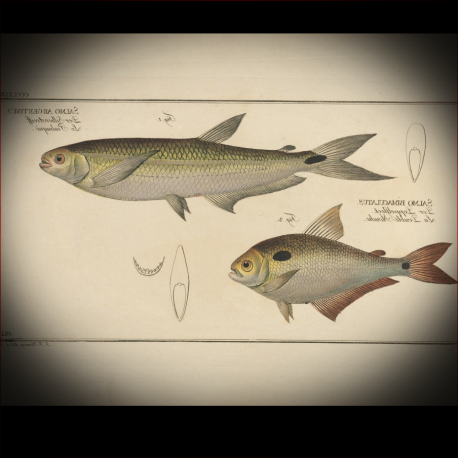More info
Datasheet
| Minimum Tank Size | 108 litres / 28.53 US gallons |
| Maximum Size | 13.0cm / 5.12inches |
| Temperature | 20°C / 68.00°F - 25°C / 77.00°F |
| Hardness | 1-20ºdH |
| pH | 6.0-7.5 |
General Description
The Piabuco Tetra, scientifically known as Piabucus Dentatus, is one of the three species in its genus, seldom found in the hobbyist aquarium trade. Identified by a distinctive black marking on its lower jaw, this tetra was once sold in the UK as the "chin tetra." With a maximum size of around 13.0cm, it is a micropredator that feeds on small crustaceans, insects, and various zoobenthos in the wild.
Aquarium Setup
For optimal care, a tank size of at least 108 liters is recommended for the Piabuco Tetra. This species thrives in a heavily planted tank, although soft-leaved plants may be nipped at. Providing floating plants is ideal as these tetras are surface-dwelling. Mimicking its natural habitat, a setup with a sandy substrate, driftwood branches, twisted roots, and dried leaves creates a suitable environment. Aquatic plants are not necessary, and well-oxygenated water with moderate flow is beneficial.
Behaviour
The Piabuco Tetra is generally peaceful but may pose a threat to smaller tankmates due to its size and rapid movements. It is best housed with similarly sized characins, peaceful cichlids, and bottom-dwelling species such as Corydoras or Loricariids. Being a shoaling species by nature, it thrives when kept in large groups and is visually appealing when swimming in the upper levels of the tank.
Feeding and Diet
In the aquarium, the Piabuco Tetra is an adaptable feeder, accepting both dried and small live or frozen foods. Their diet typically consists of bloodworms and can also include red filamentous algae like Audouinella, a behavior uncommon for tetras. Gut analyses of wild specimens have revealed their micropredatory nature, consuming various small prey items.
Reproduction & Dimorphism
Reproduction in the Piabuco Tetra has not been extensively documented in captivity. However, it is presumed to be an egg-scattering species with minimal parental care. Breeding this tetra requires a separate tank with dim lighting and fine-leaved plants like Java moss for egg deposition. Spawning can be induced by conditioning pairs or groups of fish with live foods. Incubation periods, fry care, and sexual dimorphism specifics remain largely unreported.
Habitat and Distribution
Piabucus Dentatus is native to the coastal waters of northern South America, with its range spanning Venezuela, Guyana, Suriname, French Guiana, and Brazil. It populates estuaries, floodplain streams, and silt-laden tributaries, often dwelling in brackish conditions. This pelagic species is commonly found in turbid waters, reflecting its habitat preferences in the wild.

